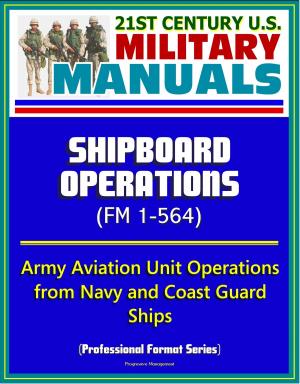C-5A Galaxy Systems Engineering Case Study: History and Technical Details of the Air Force's Behemoth C-5 Cargo Aircraft
Nonfiction, Science & Nature, Technology, Aeronautics & Astronautics, History, Military, Aviation| Author: | Progressive Management | ISBN: | 9781476322858 |
| Publisher: | Progressive Management | Publication: | July 20, 2012 |
| Imprint: | Smashwords Edition | Language: | English |
| Author: | Progressive Management |
| ISBN: | 9781476322858 |
| Publisher: | Progressive Management |
| Publication: | July 20, 2012 |
| Imprint: | Smashwords Edition |
| Language: | English |
This is one of a series of systems engineering case studies prepared by the Air Force Center for Systems Engineering. This case study analyzes the C-5 cargo airplane.
The success of the C-5 transport aircraft is underscored by the performance of the fleet as an operational system and its heavy lift support in all of our conflicts from Vietnam to Iraq. It still accomplishes tasks that no other military aircraft, such as the new C-17 or any derivative of commercial cargo aircraft, can perform, and has consistently carried more cargo than any other aircraft in the time of war. With a towering six-story "T" tail and a unique knight's visor forward-loading door, this gigantic aircraft is capable of carrying two of the heaviest Army tanks and their related equipment, or three CH 47 Chinook helicopters. The front and aft ramps facilitate easy drive-on, drive-off loading of military vehicles and equipment. The aircraft is capable of carrying heavy, outsized cargo in a cargo bay that measures 19.5 feet wide by 13.5 feet high by 120 feet long.
The study provides a wealth of technical information about the aircraft and its complex history.
The Department of Defense is exponentially increasing the acquisition of joint complex systems that deliver needed capabilities demanded by our warfighter. Systems engineering is the technical and technical management process that focuses explicitly on delivering and sustaining robust, high-quality, affordable solutions. The Air Force leadership has collectively stated the need to mature a sound systems engineering process throughout the Air Force. Gaining an understanding of the past and distilling learning principles that are then shared with others through our formal education and practitioner support are critical to achieving continuous improvement.
These cases support academic instruction on SE within military service academies, civilian and military graduate schools, industry continuing education programs, and those practicing SE in the field. Each of the case studies is comprised of elements of success as well as examples of SE decisions that, in hindsight, were not optimal. Both types of examples are useful for learning. Along with discovering historical facts, we have conducted key interviews with program managers and chief engineers, both within the government and those working for the various prime and subcontractors. From this information, we have concluded that the discipline needed to implement SE and the political and acquisition environment surrounding programs continue to challenge our ability to provide balanced technical solutions.
This is one of a series of systems engineering case studies prepared by the Air Force Center for Systems Engineering. This case study analyzes the C-5 cargo airplane.
The success of the C-5 transport aircraft is underscored by the performance of the fleet as an operational system and its heavy lift support in all of our conflicts from Vietnam to Iraq. It still accomplishes tasks that no other military aircraft, such as the new C-17 or any derivative of commercial cargo aircraft, can perform, and has consistently carried more cargo than any other aircraft in the time of war. With a towering six-story "T" tail and a unique knight's visor forward-loading door, this gigantic aircraft is capable of carrying two of the heaviest Army tanks and their related equipment, or three CH 47 Chinook helicopters. The front and aft ramps facilitate easy drive-on, drive-off loading of military vehicles and equipment. The aircraft is capable of carrying heavy, outsized cargo in a cargo bay that measures 19.5 feet wide by 13.5 feet high by 120 feet long.
The study provides a wealth of technical information about the aircraft and its complex history.
The Department of Defense is exponentially increasing the acquisition of joint complex systems that deliver needed capabilities demanded by our warfighter. Systems engineering is the technical and technical management process that focuses explicitly on delivering and sustaining robust, high-quality, affordable solutions. The Air Force leadership has collectively stated the need to mature a sound systems engineering process throughout the Air Force. Gaining an understanding of the past and distilling learning principles that are then shared with others through our formal education and practitioner support are critical to achieving continuous improvement.
These cases support academic instruction on SE within military service academies, civilian and military graduate schools, industry continuing education programs, and those practicing SE in the field. Each of the case studies is comprised of elements of success as well as examples of SE decisions that, in hindsight, were not optimal. Both types of examples are useful for learning. Along with discovering historical facts, we have conducted key interviews with program managers and chief engineers, both within the government and those working for the various prime and subcontractors. From this information, we have concluded that the discipline needed to implement SE and the political and acquisition environment surrounding programs continue to challenge our ability to provide balanced technical solutions.















